Antigua Heritage Landmarks
St. John’s is the capital city and main port of Antigua and Barbuda with a population of about 23,000. In 1842, it was raised to the dignity of a "city", when a diocese was created. It had been laid out on a grid pattern in 1702, but the streets are rather narrow for today’s vehicles!
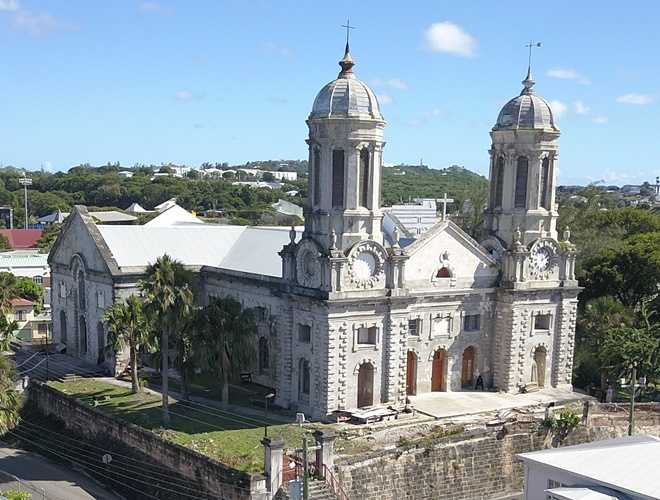
Saint Jonn's Cathedral Church
The Cathedral—This is a ‘building within a building’ for the interior is encased in pitch pine intended to secure worshippers in case of earthquake. When it was opened for service in 1846, it was said to be ‘more like a pagan temple with pepper pot towers’. However, in modern times it has been said to be the ‘most imposing of all Cathedrals in the West Indies’.
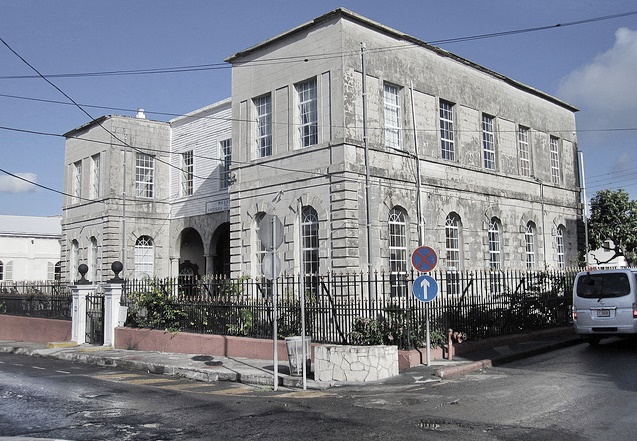
Museum Of Antigua Barbuda
The Museum of Antigua and Barbuda—Set in the old Courthouse of 1749, the museum tells of Antigua & Barbuda’s history. It has something for everyone; go in and enjoy the historic atmosphere in a cool oasis in the middle of St. John’s. Purchase gifts, meditate and forget the cares of the world.
Redcliffe and Heritage Quays— Here are two examples of urban renewal with shops and restaurants set on St. John’s Harbour. The former is housed within reutilised brick buildings while the latter has duty-free shopping within purpose-built modern construction.
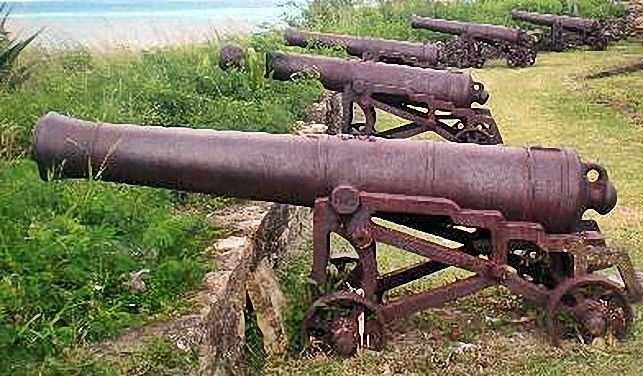
Fort James Cannons
A large fort at the entrance to St. John's Harbour.This is the only fort in Antigua where a few of the original great guns are still in place. They date to George III's reign and survived a scrap iron collection of 1869. Eleven men were required to handle one of these 2.5 ton guns that discharged a shot 1.5 miles distant. There is an inner fort, soon to be restored where an interesting detached kitchen may be entered.
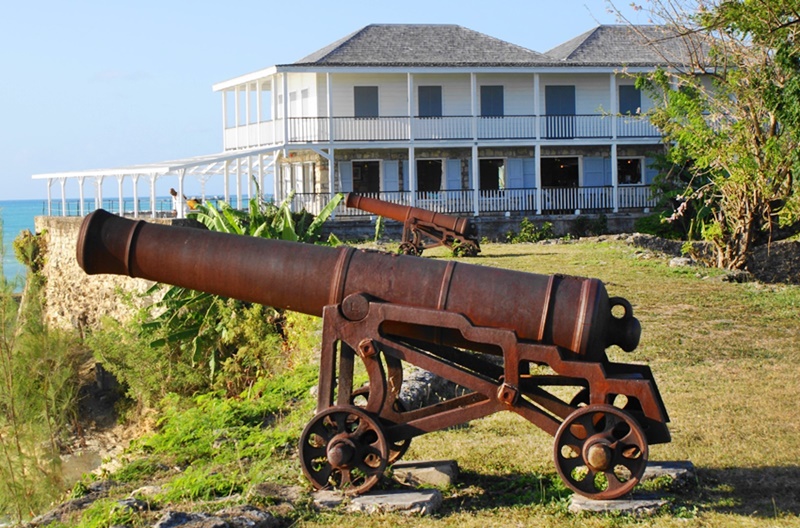
Nelson’S Dockyard
This heritage landmark is the only remaining naval dockyard in the world designed to maintain wooden sailing warships of olden times. It was started as early as 1725, though it had been used as shelter from the mid 17th century. The first recorded ship at English Harbour, anchored to survive a hurricane, was a yacht. It was a naval ship chartered to the King for the use of his Governor of the Leeward Islands.
Nelson— The famous British hero of Trafalgar (1805), Horatio Nelson, was here as Senior Captain (27 years old) in 1784. As a zealous Naval Officer, he enforced the Navigation Act, which stated only British ships could trade with British islands.
America had become independent, so Nelson severely upset the Antiguan merchants by suppressing their long standing trade with the former British American colonies. At one time, if he had left his ship (‘Boreas’), he would have been arrested. The merchants were attempting to sue him.
Uses and Life—The Dockyard’s main function was to maintain and careen ships, thus saving the long voyage to America for docking. The yard was abandoned in 1889, and in 1930, restoration was half-heartedly started, and in 1951, it went full ahead. The National Parks Authority took over from the Friends of English Harbour in 1984.
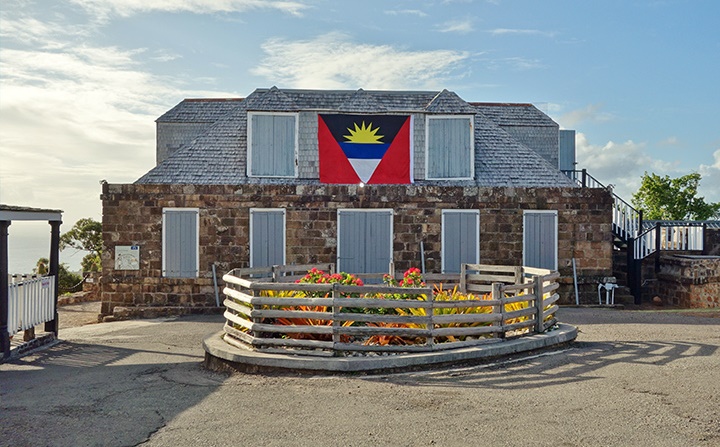
Shirley Heights
This military complex, within a short distance of the Dockyard, is not named after the fairer sex, but after Sir Thomas Shirley, Governor of the Leeward Islands, who strengthened Antigua’s defences in 1781. Britain had lost all her West Indian colonies (including North America) at this time except Antigua and Barbados.
Much effort, therefore, was put into Antigua’s defences, mainly because of the island’s great sugar producing value and the important Dockyard. Shirley Heights may be divided into four sections: Dow’s Hill. Visit the 15 minute multimedia show and learn about Antigua’s history, heritage and culture. This interpretation centre was designed and built with Canadian aid in 1992.
The Ridge and Artillery Quarters. A Ridge, on which several ruins may be noted, leads to the Heights. The first buildings on the left are the Royal Artillery Gunner’s Barracks along with the Train of Artillery building (now a research centre), built in 1790 for 60 men. After the army left, it became a lunatic asylum.
Blockhouse. A blockhouse is defined as a place of last refuge. Here is a fine view of the southeast section of Antigua and there are the remains of an Officer’s Quarters and a Powder Magazine.
The Lookout. This high point (about 490 ft.) affords a superb view of English and Falmouth Harbours, the best view in Antigua. Today, it is a Sunday afternoon rendezvous for a sampling of local music and culture. Behind the gun platform is the site of a flagstaff that once sent signals all around Antigua.
Clarence House
A Georgian residence.
This Georgian country house was built for the Commissioner of the Dockyard in 1806. At the present time it is not open to the public as it is being rebuilt after a recent hurricane, but the view of English Harbour and the Dockyard is superb. From about 1820 it became to be known as Clarence House. The house was then being used by the Governor of the Leeward Islands as his country residence.
Falmouth
This present day village near English Harbour is supposed to have been the first town of Antigua. In 1672, it possessed the only church of the island, which also served as a courthouse. Above this village is the famous Fort George on Monk’s Hill built from 1689 to about 1730. It was a place of last refuge against the attacks of Caribs and other European powers.
Liberta Village
This is a large village on the way to St. John’s, It was created and named after the emancipation of the slaves in 1834. Freetown is another village with a name associated with freedom.
All Saints
This is another large village in the centre of the island. Here four parishes named after a Saint converge. This gave rise to the naming of All Saints Church in the 19th century. Later houses began to be built around the church.
Nearby was Freeman’s Estate (Jonas) where many Date Palms were supposed to have been introduced from Africa in the colonial times of the 18th century. Camels had been introduced as beasts of burden and these plants were to be used as their fodder. The camels died of hoof disease in the comparatively damp soil of Antigua, but the palms lived on for us to see in abundance today.
BETTY’S HOPEThis is a sugar plantation site where one of the two sugar mill towers has been fully restored complete with sails. With a small interpretation centre, this heritage landmark is well worth a visit.
Betty’s Hope was one of the earliest sugar plantations, dating to 1651. In 1990, restoration began. Today about 112 sugar mill towers still dot the countryside of this independent nation, reminding us of the days of slavery under ‘King Sugar’.
ST. PETER’S CHURCHGeorgian architecture unique in the region, c. 1843.
St. Peter’s is a masterpiece of ecclesiastic Georgian architecture built in the Palladian manner and is unique in the region. It is beautiful in its splendid proportions, scholarly detail and fine workmanship.
It is of irregular octagonal shape with its sides not of equal dimensions. It has a massive roof under which is a fascinating unique rib-like wooden ceiling, not unlike the construction of a boat. The head mason was black and was responsible for the smoothness in the joints of the walls and a very neat keystone, which he sculptured.
FIGTREE DRIVE—ADrive around the south-western quarter of the island.
A truly magnificent and picturesque part of the mountainous section of Antigua.. The first village passed is Swetes (named after a former estate owner) and on through to the village of John Hughes. A side trip can be made to the Wallings forest natural reserve around an interesting 1890 reservoir. Fig Tree Hill has lush vegetation reminiscent of Dominica, and soon passed is Old Road village.
Further on, a visit can be made to a very large hollow Silk Cotton tree (Hura crepitans) in which one can enter. Soon coastal scenery comes into view and more villages are passed on Antigua’s west side as well as Jolly Beach Hotel and Harbour. This area is famous for the first Archaic Antiguans settled here about 4,000 years ago. After passing through the village of Jennings, the city of St. John’s soon comes into view.
DEVIL’S BRIDGEOn the eastern coast, a natural area.
This is a remarkable example of natural sea-water erosion. A bridge was geologically created when a soft part of limestone was eroded by the Atlantic Ocean. The foaming breakers below are impressive. In the days of slavery it was said that slaves came here to commit suicide, the devil having got into them.